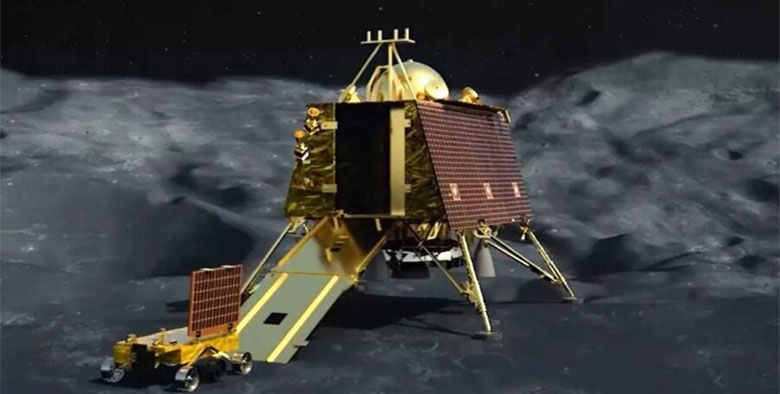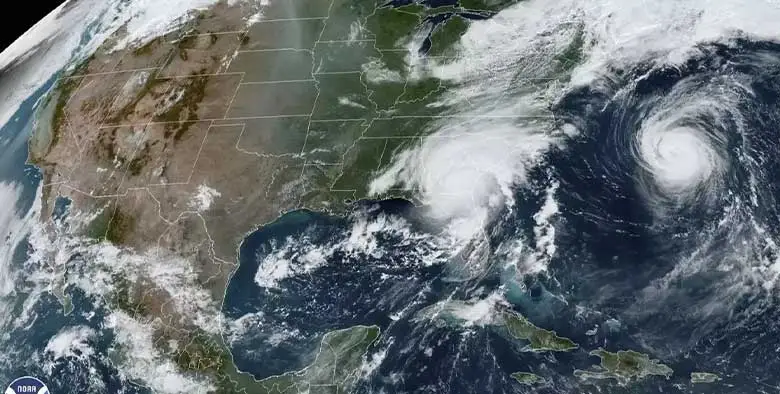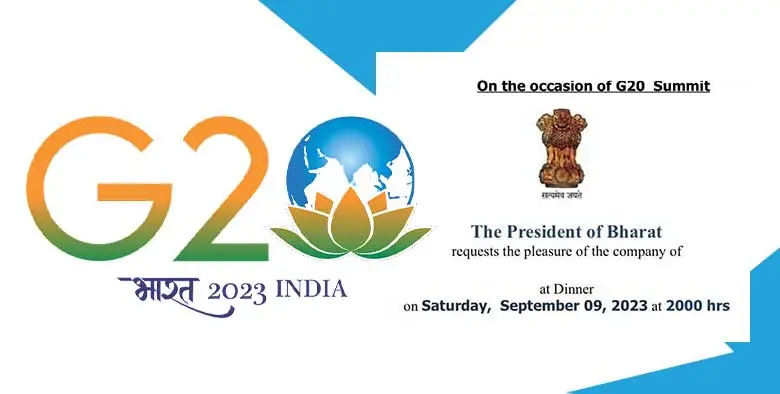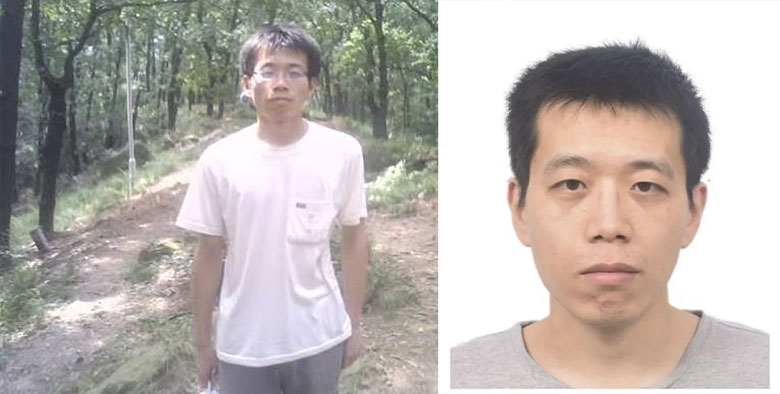- Know Everything About Nipah Virus, Which Is Back In Kerala Again
- Kevin Porter Jr Arrested On His Girlfriend’s Assault Charge
- Market Change Overnight - Know The 8 Things That Did It
- Who Are Alba Baptista And Chris Evans Married On The Weekend?
- Disrupted India vs Pakistan Asia Cup 2023 Match on Reserve Day
- 10 Common Foods That Contain No Calories or Are Very Low in Calories
- Men’s Styling Tips - Know the 9 Common Style Mistakes to Avoid
- Coco Gauff Beats Karoline Muchova and Reaches the US Open Final
- Danny Masterson Gets Life Sentence of 30 Years for Two Rapes
- Experience A Splendid Vacation in Kashmir with These 15 Gorgeous Sights
- India
- Sunday , May 05, 2024
- Last Published Sep 12, 2023, 6:48:32 PM

Chandrayaan 3 - Know Its Full Story With Its Mission, Goals, And More
The 23rd of August 2023 was a very precious day for all Indians as it marked the successful and soft landing of Chandrayaan - 3 (moon craft) on the southern surface of the moon. With this, India became the fourth country to touch the moon's surface after the USA, Russia, and China. And India is the first country to land its moon craft on the southern region of the moon that Russia’s Luna 25 could not do due to the crash.
As Indians, we all celebrated the occasion with our full spirit. Our Prime Minister went saying, “India is now on the moon. We have reached where no other country could. It's a joyous occasion.” Sreedhara Panicker Somanath, ISRO chief, said on the successful landing of Chandrayaan 3, “It is not our work alone, this is the work of a generation of Isro scientists”. Of course, it is a moment of joy, excitement, and celebration. And we all are doing it. However, some of us still do not know about Chandrayaan 3 in detail. So, keep going through the post from beginning to the end.
What is Chandrayaan 3?
Chandrayaan 3 is a follow-up and 3rd lunar exploration mission of ISRO’s (Indian Space Research Organization) Chandrayaan program. It has a Lander, called Vikram, and Rover, known as Pragyan, configuration. Launched on 14 July 2023 from Sriharikota, Chandrayaan 3 entered into the moon’s orbit on the 5th of August and landed successfully on the southern polar region of the moon on the 23rd of August 2023. It will remain functional for more than 15 days and take photos and conduct research work on the moon surface during that period.
Background or What Happened to Earlier Attempts
Chandrayaan -3 is the third of ISRO’s ongoing moon exploration mission. The moon exploration mission program of the Indian Space Research Organization (ISRO) includes an impactor, orbitor, a rover spacecraft, and a soft lander. Before the successful landing of Chandrayaan 3 on 23 August 2023, ISRO attempted twice to touch the moon’s surface - Chandrayaan 2 in 2019 and Chandrayaan 1 in 2008. The space organization failed in its two earlier attempts. There was a successful deployment of Chandrayaan 2’s orbitor but its rover and lander crashed at the same place of touchdown Chandrayaan 3 did this year. On the other hand, Chandrayaan 1 did not have the deployment of orbitor as it crashed on the way to the moon.
Chandrayaan 3 Mission and Objectives
The Indian Space Research Organization (ISRO) learnt a lot from its previous unsuccessful attempts. So, its people were very conscious this time, from the design to launch and landing of Chandrayaan 3. As per ISRO, there are three primary objectives of this moon craft:
• To demonstrate Safe and Soft Landing on Lunar Surface
• To demonstrate Rover roving on the moon
• To conduct in-situ scientific experiments
To attain these objectives, ISRO used several advanced technologies in the lander. According to ISRO, the used advanced technologies are as follows:
• Altimeters - RF and Laser based Altimeters
• Inertial Measurement - Laser Gyro based Inertial referencing and Accelerometer package
• Velocimeters - Lander Horizontal Velocity Camera and Laser Doppler Velocimeter
• Propulsion System - 800N Throttleable Liquid Engines, Throttleable Engine Control Electronics, and 58N Attitude Thrusters,
• Guidance, Navigation, and Control (NGC) - Powered Descent Trajectory design and associate software elements
• Hazard Detection and Avoidance - Lander Hazard Detection & Avoidance Camera and Processing Algorithm
• Landing Leg Mechanism
Configuration of Chandrayaan 3
After learning a lot from the previous two attempts in 2019 and 2008, ISRO with its people was very conscious and careful this time as it did not want to make any mistakes. Chandrayaan 3 has a lander (Vikram) and a rover (Pragyan) that was taken to the moon’s orbit by LVM3 from Sriharikota. The lander has payloads as:
• ChaSTE (Chandra’s Surface Thermophysical Experiment) to measure the thermal temperature and conductivity
• Instrument for Lunar Seismic Activity (ILSA) for measuring the seismicity around the landing site
• Langmuir Probe (LP) to estimate the plasma density and its variations
• A passive Laser Retroreflector Array from NASA for lunar laser ranging studies
On the other hand, the rover has payloads such as LIBS (Laser Induced Breakdown Spectroscope) and APXS (Alpha Particle X-ray Spectrometer) for deriving the elemental composition in the vicinity of the landing site.
Chandrayaan 3 has a PM (Propulsion Module), LM (Lander Module), and a Rover. All these three aim to develop and demonstrate new technologies that are the need for interplanetary missions. The lander is capable of landing the moon craft softly on the certain moon surface and deploying the rover to study the lunar surface and conduct chemical analysis of objects lying there. With specific payloads, mentioned above, all these will make the mission of the moon exploration successful.
Chandrayaan 3 Timeline
As Indians, we are proud to be on the moon with the successful landing of Chandrayaan 3 on 23 August 2023. This success is not a day of work, effort, and dedication. But it is a constant effort that started before the launch of this moon craft on the 14th of July 2023. Having a look at the timeline in chronological order will help you comprehend it better:
Date | Work Progress in the Successful Landing of Chandrayaan 3 |
The moon craft with its modules is working what it is designed for, exploring the moon’s surface and conducting an analysis of objects found on the surface. | |
23 August 2023 | Soft and successful landing of Chandrayaan 3 on the southern polar region of the moon |
20 August 2023 | The spacecraft into the 25 km x 134 km orbit around the moon |
19 August 2023 | Lander Module (LM) in the 113 km x 157 km orbit around the moon. Planning of the 2nd deboosting on 20 August 2023 |
17 August 2023 | Separation of LM from PM and scheduling of deboosting on 18 August 2023 |
16 August 2023 | The spacecraft in the 153 km x 163 km orbit after firing on the same day |
14 August 2023 | The moon exploration mission in circularization phase and the craft is in a 151 km x 179 km orbit |
9 August 2023 | Reduction in Chandrayaan 3 orbit to 174 km x 1437 km after the completion of orbit raising maneuver |
6 August 2023 | The spacecraft entered into 170 km x 4313 km orbit around the moon |
5 August 2023 | Successful insertion of Chandrayaan 3 into the lunar orbit. Attained orbit 164 km x 18074 km |
1 August 2023 | The insertion of the spacecraft into the translunar orbit and planning of the next insertion on 5 August. Attained orbit 288 km x 369328 km |
25 July 2023 | 5th Orbit raising maneuver done and scheduling of next firing on 1 August 2023 |
22 July 2023 | Execution of the 4th orbit raising maneuver and the spacecraft went in a 71351 km x 233 km orbit |
17 July 2023 | Execution of the 2nd orbit raising maneuver and the craft went in 41603 km x 226 km orbit |
15 July 2023 | Execution of orbit raising maneuver at Bangalore and The craft went in 41762 km x 173 km orbit |
14 July 2023 | The launch of Chandrayaan 3 into orbit by LVM3 M4 vehicle and the beginning of journey to the moon |
11 July 2023 | Rehearsal of launching the moon craft, Chandrayaan 3 |
7 July 2023 | Completion of vehicle testing and invitation of people to witness the launch of Chandrayaan 3 on 14 July 2023 |
6 July 2023 | Scheduling of the launch date, at 14:35 on 14 July 2023 from Sriharikota |
What is the importance of Chandrayaan 3 landing on the moon’s south pole region?
Before India, only three countries - USA, Soviet Union (now Russia), and China - touched down the moon surface with their earth’s satellites. And no country has touched the southern pole region of the moon. Russia tried to touch this region a week ago but failed in it due to the crash of its spacecraft. Touching the southern pole region by India is very important as this region contains water ice that could be a base for future study on the moon for an extended period. NASA, the US space agency, also found frozen water in the southern region through satellite images but did not touch the region earlier than India. If there is water in any form, scientists can make it useful for oxygen, fuel, and drinking water.Why did no country do this earlier?
Touching the southern pole region was extremely difficult. It got proved through Russia’s unsuccessful attempt. Only India knew that it could do as its previous spacecraft touched the surface in the moon’s south pole region. India could not do it earlier due to the crash of the lander and rover of Chandrayaan 2. Further, the south pole of the moon is far away from the missions attempted earlier. And the region has a tough terrain with plenty of craters and deep trenches.What next after successful landing of Chandrayaan 3 or Chandrayaan 3’s Goals
After the soft and successful landing on the southern pole region on the 23rd of August 2023, Chandrayaan 3’s payloads are working on the moon’s surface. One of the most significant goals of this lunar exploration is to hunt for water-based ice. According to space scientists, success in water-based ice will pave the way for creating human habitation on the moon in future. Further, it will facilitate carrying water and allied things to other planets such as Mars.Chandrayaan 3’s lander and rover have carried five sophisticated scientific instruments/payloads that will help in exploring the characteristics of objects found on the moon surface, especially the southern polar region, and the atmosphere there. The rover has ISRO’s logo and Indian national flag so that it can leave marks while walking on the moon's surface.












